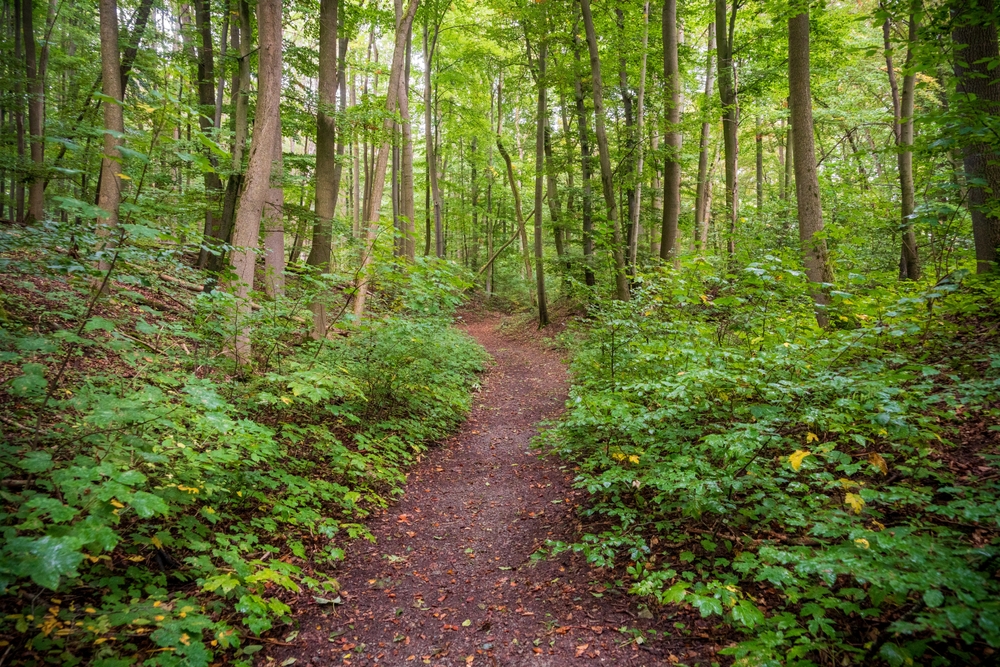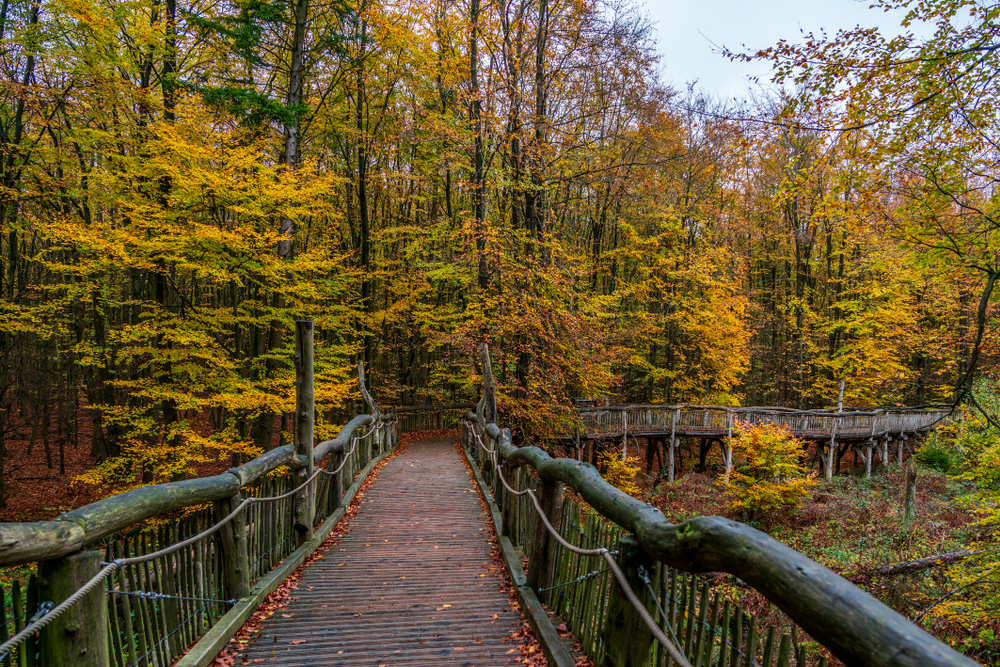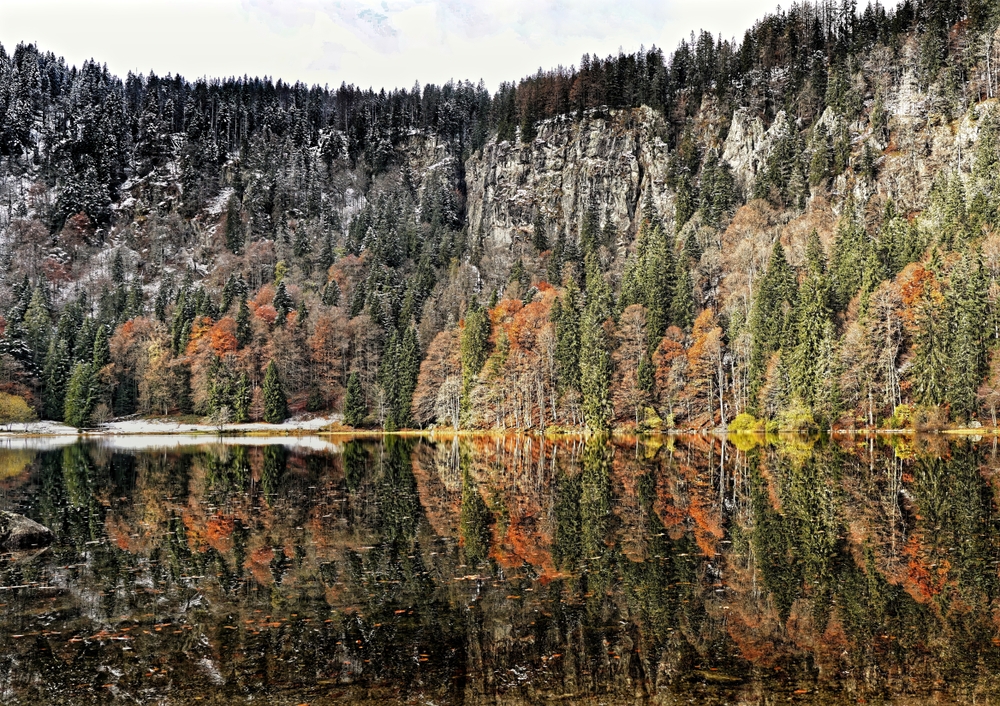Hainich Overview
Hainich National Park, known locally as Nationalpark Hainich, is located in the central German state of Thuringia. Covering an area of approximately 75 square miles (195 square kilometers), it is Germany’s largest deciduous forest national park.
Established in 1997, the park was created to protect one of the last remaining primeval beech forests in Europe, a rare and ecologically significant ecosystem. Situated along the western edge of the Thuringian Basin, it forms part of the larger UNESCO-listed Ancient and Primeval Beech Forests of the Carpathians and Other Regions of Europe.
The park’s terrain is defined by rolling hills, undulating meadows, and dense woodlands dominated by European beech (Fagus sylvatica). The landscape features gentle slopes and valleys, creating a diverse array of microhabitats. The park is known for its karst formations and limestone soils, which contribute to the region’s unique biodiversity.
Throughout the park, visitors will encounter lush greenery, seasonal wildflowers, and a thick canopy that creates an almost mystical atmosphere. Hainich is especially renowned for its old-growth forests, where massive trees stretch skyward, their intertwining branches forming a dense and thriving ecosystem. The forest floor is home to mosses, fungi, and a variety of ferns, providing a habitat for countless small organisms.
Hainich National Park is a haven for wildlife, with many species making their home within its protected boundaries. The park is an essential refuge for the elusive European wildcat (Felis silvestris), a species that has become increasingly rare in Germany. Other mammals commonly found here include red deer, roe deer, and wild boar, which roam freely through the dense woodlands.
The park is also an excellent location for birdwatching, with over 180 species recorded, including the black stork, Eurasian pygmy owl, and middle spotted woodpecker. Birds of prey such as the red kite and common buzzard can often be seen soaring above the treetops. The park’s wetlands and streams also support amphibians like fire salamanders and various frog species.
One of the most popular features of Hainich National Park is the renowned Tree Canopy Walk (Baumkronenpfad), a 1,700-foot-long (530-meter) elevated path that takes visitors high above the forest floor. This walkway provides breathtaking panoramic views of the beech forest, allowing visitors to experience the ecosystem from an entirely new perspective.
Additionally, the Wildcat Village (Wildkatzendorf Hütscheroda) offers an opportunity to learn about and observe wildcats in a naturalistic setting. Numerous hiking trails wind through the park, ranging from easy walks to more challenging routes, providing a chance to explore the deep forests, meadows, and limestone outcroppings. Cycling is also a popular way to navigate the park, with designated bike trails allowing visitors to cover greater distances while enjoying the scenic landscape.
Conservation has been a central focus of Hainich National Park, with efforts directed at protecting its old-growth forests and the species that depend on them. Since its designation, the park has allowed natural processes to take over, with minimal human intervention.
Rewilding initiatives have supported the return of native species, and ongoing monitoring ensures the health of the ecosystem. The success of the park’s conservation efforts is evident in the stable populations of wildcats and the increasing biodiversity within the park.
However, challenges remain, including climate change, habitat fragmentation outside the park, and the impacts of tourism. Park management continues to balance conservation with sustainable visitor experiences, ensuring that Hainich remains a thriving and protected landscape for future generations.















































































